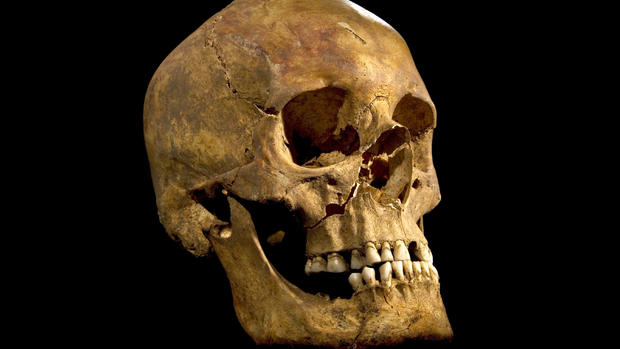Having given up his secrets, Richard III to be reburied
"Yep, it's a skeleton," archaeologist Matthew Morris announced.
Captured in a newly released video, that discovery three years ago in a British church parking lot would eventually lead to confirmation that the bones Morris was excavating were indeed those of King Richard III. Eleven days after the first mud-covered fragments were found, the University of Leicester researchers exhumed the skeleton and found it to be that of a young male with evidence of battle trauma and severe curvature of the spine.
Five months later, Skeleton One from what was called the Greyfriars Archaeological dig was confirmed to be the remains of Richard III.
Now, those remains will be reburied in an elaborate ceremony fit for a king, complete with a procession Sunday taking the lead-lined coffin from the university to Leicester Cathedral.
It will be on public view at the cathedral until March 26, when his remains will be reburied there in a ceremony that will be led by the Archbishop of Canterbury and include representatives of other faiths. Two days later, the sealed tomb of King Richard III will be exhibited for the public.
There are no plans to reopen the tomb after that.
In a run-up to the reburial, the University of Leicester has released video footage of the first moments of discovery that led to the torrent of new information about the king who died in battle 500 years ago and who was immortalized by Shakespeare as a villainous hunchback who had his brother and nephews killed to secure the throne for himself.
Researchers used DNA analysis to affirm there was a "perfect mitochondrial DNA match" in the sequence obtained from the skeleton and two living relatives of Richard III. Those relatives, Michael Ibsen and Wendy Duldig, were linked to Richard III through a female-only line descended from the king's eldest sister Anne of York.
The DNA analysis also provided fresh details about his appearance. Most likely he had blond hair and blue eyes. And the researchers used whole body CT scans and micro-CT imaging of injured bones to provide details of exactly how he died.
The king sustained a total of 11 wounds at or near the time of his death at the Battle of Bosworth Field on August 22, 1485. Nine of the injuries were inflicted to the skull, which suggests that he had removed or lost his helmet. Two other wounds were found elsewhere on the body.
